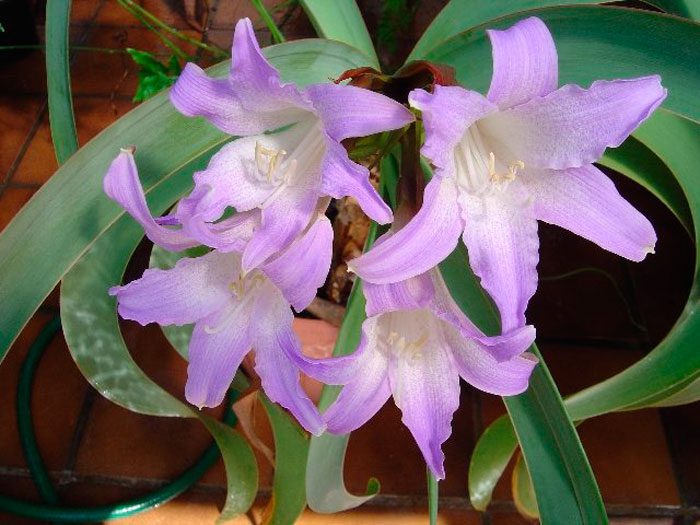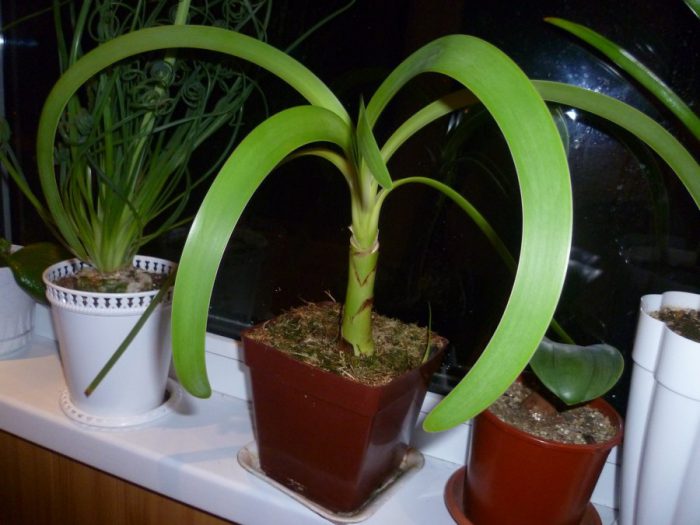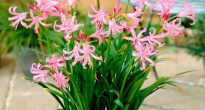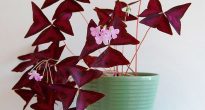Worsley (Worsleya), which is also called blue amaryllis, not so often grown indoors, even by experienced florists, and it is rarely seen in the collections of amaryllis. There is only 1 representative in this genus - Worsleya procera. This plant can be found in the wild in the tropical regions of eastern Brazil. Prefers wet and well-lit mountain slopes, usually located near waterfalls. Prefers rocky soil.
The bulb of this plant is very large, which is typical for all members of the amaryllis family. Together with the flower, it reaches a height of several meters, but this is only in natural conditions. The narrow, green hairs grow up to 90 centimeters long.
This plant looks especially impressive with lovely flowers that have an unusual color. So, it can be from dark blue to light blue. The flowers reach 15 centimeters in diameter, and up to 15 of them can be on one peduncle.
When grown indoors, this flower usually blooms in summer. In natural conditions, flowering can occur in any of the months.
Worsley is quite popular among flower growers, and all this thanks to its unusually beautiful flowers. And most of all, American flower growers love to grow it. However, with all this, this plant is considered quite capricious, and the cost of blue amaryllis is very high.
Such a flower needs special conditions of detention. The land he needs is rocky, but rich in nutrients. The place needs to be very humid and well lit. A winter garden is best suited for him, but you can also grow vorsle in indoor conditions if there is a window opening located in the southern part of the room. And also this plant should be placed among others who prefer high humidity. So, its neighbors can be aroids, bromeliads, as well as cyperus, which strongly loves moisture.
In order for the cultivation in indoor conditions to be successful, the hairs need certain favorable conditions. She needs high air humidity and good lighting, it also needs a nutrient medium. The plant should be watered every day, but at the same time there should be a good drainage layer at the bottom of the pot, which is able to simulate the rocky slopes of the environment where it lives in natural conditions.
Content
Hair care at home
Illumination
The flower should be placed on the sunny side.
Temperature regime
Worsle grows in the wild at moderate temperatures, and it is quite cool at night. Therefore, it reacts negatively to high temperatures (over 30 degrees). It is desirable for this plant to provide a decrease in temperature at night. In the summertime, it can be moved to fresh air. With a short-term decrease in temperature to 2 degrees, the flower does not suffer.
Humidity
Requires high humidity.
Watering rules
It is important to water the hairs once a day. When she has a dormant period (she practically stops growing), watering should be reduced. But at the same time, you need to ensure that the flower does not dry out. The soil during this period should be constantly slightly moistened.
Top dressing
This plant needs systematic feeding. So, it should be fed with each watering, dissolving the dose in water, or apply the recommended dose of complex fertilizer to the soil once every 7 days.
Earth laugh
The type of soil used to grow the hair is very important. So, he needs a free-flowing earth mixture that would perfectly pass oxygen, and also liquid must drain very quickly through it. For planting, it is recommended to use pieces of lava, pumice or other porous rocks with sizes from 5 to 10 millimeters. So that water and nutrients can stay in the soil, you need to add a little sphagnum moss, coconut shells or peat into it.
How to transplant
Transplanting adult plants is extremely rare, while the pot is selected only not much larger than the bulb.
Dormant period
In winter, it is recommended to move the hairs to a cool room and provide poor watering. However, in the wild, this flower blooms several times a year at any time, and it has no clear boundaries for the dormant period.
Reproduction methods
Can be propagated by seeds, babies and by dividing the bulb.
It is recommended that purchased seeds be placed in a stimulant (epin) solution before sowing; you can also add substances used to prevent fungal diseases (phytosporin, vitaros). Sowing is carried out in sand mixed with peat and vermiculite. The container is covered with foil and aired daily. The first shoots will appear in about 14 days, after which the film must be removed.
The separation of children is carried out at the time when the plant is transplanted. In this case, the approximate size of the children should be 2 centimeters in diameter.
The bulb is divided in rare cases. This procedure is similar to dividing the hippeastrum bulb.














